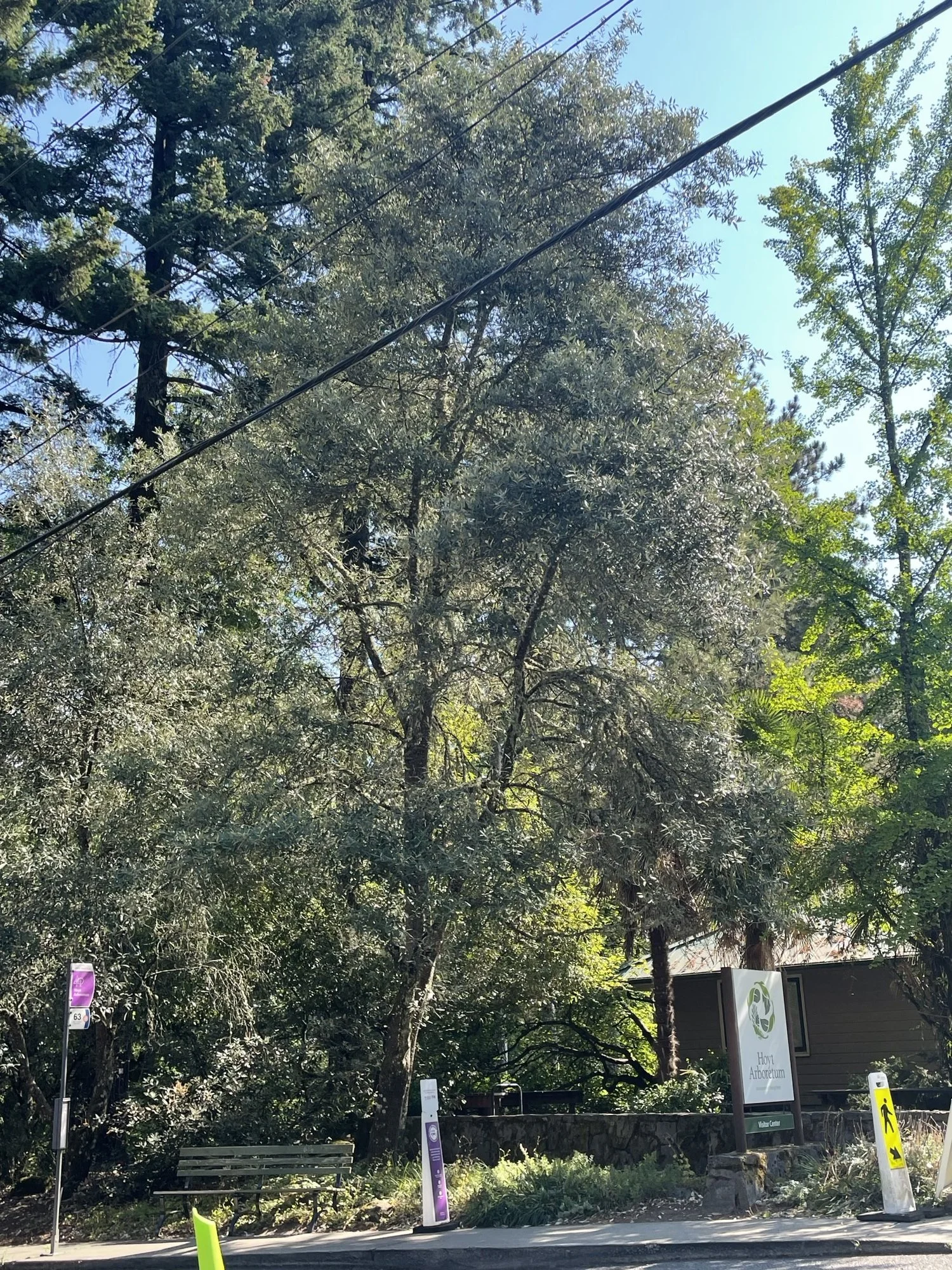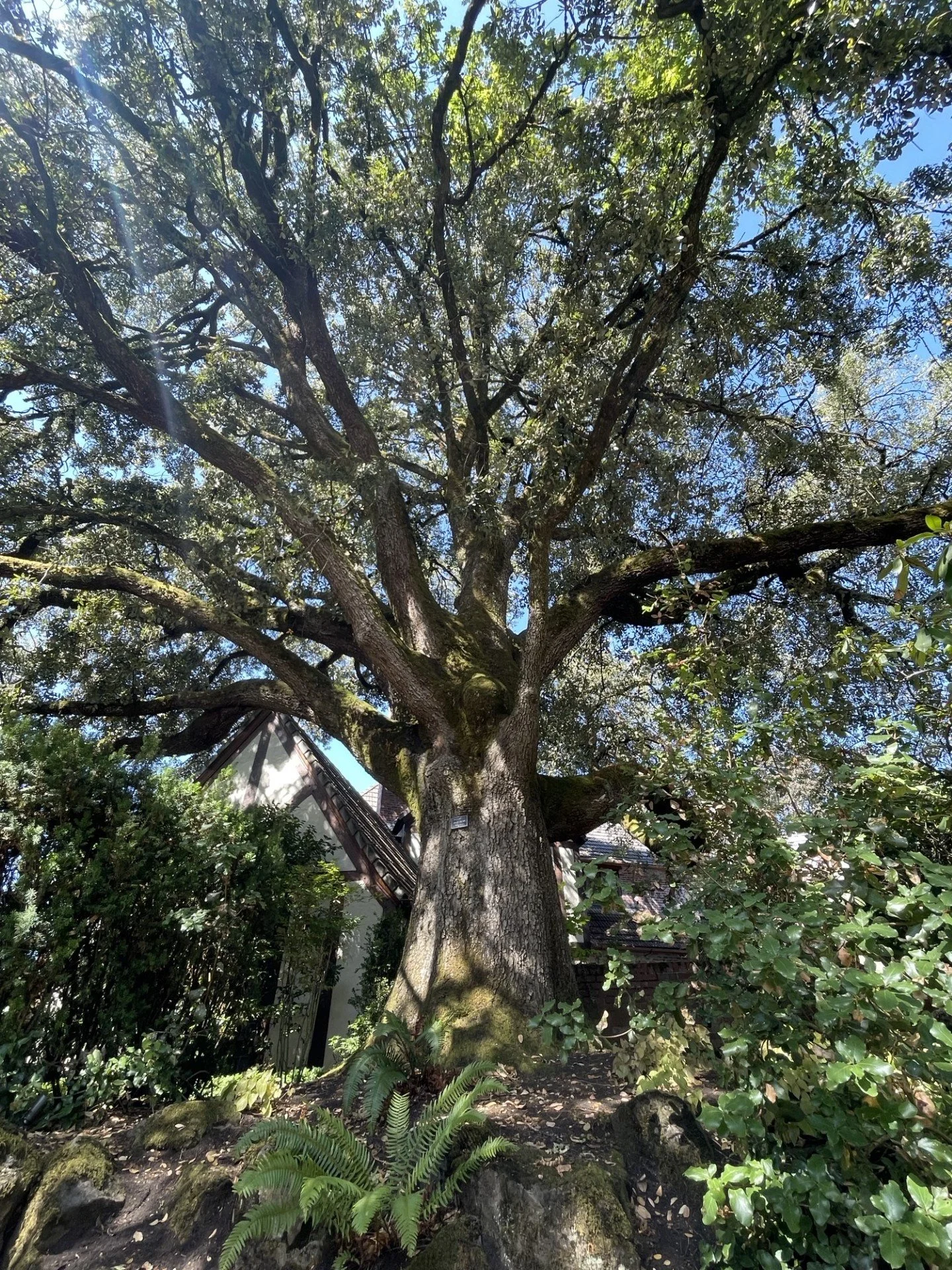Evergreen Oak Trees for a Climate Ready PNW
As the Pacific Northwest becomes hotter and dryer, it is time we reconsider the trees adapted to the environment. Increasingly, drought has resulted thousands of acres of tree mortality; land managers in natural areas are seeing vast areas of native timberland burn every year; and in urban areas, I have seen mature trees struggle and decline. Even with adequate irrigation during establishment, young trees struggle and die in the harsh and hot urban environment.
Historically, trees planted have included both those native to our region and those introduced by white settlers. These native and introduced species have thrived because Portland is a great place to grow most trees thanks to our clay loamy soils, abundance of precipitation and mild winters. But we cannot ignore that these conditions have changed over the last decades. We now have longer, hotter summers with less precipitation. With these changes in climate, so too must our tree planting preferences and practices.
So what can we do? As Dave Muffy of Oaktopia suggests, we must plant resilient trees: “Plant what survives well in current conditions, and look to the climate zones projected to come your way for trees to test. Observe the tests carefully, and let the successful tests guide your way forward. But the basic message is simple… PLANT RESILIANT TREES!” To address climate change, drought tolerant species already locally planted must be planted even more abundantly and trees that thrive in places like Sacramento, California should be tested in our region.
Some of the most promising species include evergreen (or live) oaks because of their drought tolerance and the environmental benefits they provide. Because they do not drop their leaves in the winter, evergreen oaks intercept greater amounts of precipitation, reducing soil erosion and reducing some the burden on our combined sewer system. In their natural habitat, they act as keystone species so that entire ecosystems rely on them for survival. Even outside their native ranges, oak acorns and canopy structure provide food and habitat for birds, insects and other animals.
Here is a few evergreen oaks I think urban foresters and landscape professionals should use in the Pacific Northwest:
SILVERLEAF OAK (Quercus hypoleucoides)
The silverleaf oak is native to the mountains in the southwestern United States and Mexico. Its native range receives limited rainfall but the high elevations expose it to below freezing conditions. Its drought tolerance combined with its ability to tolerate low temperatures make it a great choice for planting in the Pacific Northwest.
The silverleaf oak is also a beautiful tree that fits well an an urban environment. Its size (50ft tall and 20-30ft wide) allows it to fit in tight spaces and moderate tolerance for root pruning allows for some development encroachment. Light cast on its sliver leaves reflect on the ground below the tree, creating a halo intermittent with the shade. A great example is the silverleaf oak growing at the entrance of Hoyt Arboretum where it has reached it approaches its mature size.
INTERIOR LIVE OAK (Quercus wislizeni)
The interior live oak is a common tree in the California’s inner Coast Ranges, the foothills of the southern Cascade Range, and the Sierra Nevada. Among California's red oaks, interior live oak has the highest tolerance for xeric conditions. Interior live oak's evergreen leaves help protect it from desiccation, but it is not well adapted to snowy or cold sites. Its branches do not hold the loads created by snow so lower elevations locations should be selected when planting this tree in the Pacific Northwest.
The interior live oak grows to 75ft tall, usually with a single stem. With its robust structure and minimal maintenance needs, it is well-suited for parks, streets, and residential yards. The City of Portland Urban Forestry planted a handful of interior live oak trees last year. Only one of these trees died in the first year, showing it has promise outside its native range.
Photo: https://landscapeplants.oregonstate.edu/plants/quercus-wislizeni
CANYON LIVE OAK (Quercus chysolepis)
The canyon live oak is native to both Oregon and California. In Oregon, it represents the northern most native evergreen oak in North America. It can grow from a small shrub on exposed ridges to a massive tree in deep canyons, where it matures as one of the world’s largest oak species. Extraordinarily cold hardy enduring temperatures slightly below 0ºF combined with its drought tolerance makes it a promising species in the Pacific Northwest’s changing climate.
Though still rare in Portland, a designated heritage canyon live oak can be found at 2425 NE Alameda Street where it has obtained a height of 80ft and a 100ft spread. Its initial slow growth allows tree managers to ensure it has good form as it matures. This is a rugged, tough tree that should be used in both gardens and as a street tree.



